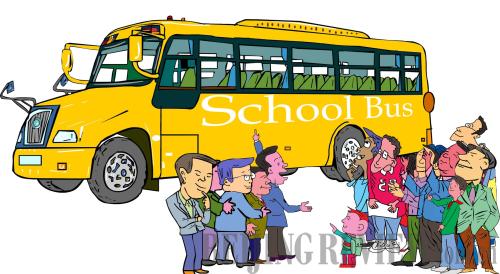|
 |
|
(LI SHIGONG) |
Following a string of road accidents in some provinces involving the death of pupils and preschoolers in the last two months of 2011, the Central Government of China decided to upgrade the national standards on the technical specification of school buses.
The draft of the new school bus standards was released on January 5, 2012, followed by a nationwide hearing of the opinions of the public.
According to the draft, the new type of school buses look like U.S. school buses, which feature a "big-nose" design—the chassis extends out from the front of the vehicle over the wheels. The new standards also have enough technical details that were designed specifically for conditions in China.
Yutong Bus Co., the largest bus producer in China by sales volume, is the leading initiator of the new standards. But some small school bus makers oppose it, saying that it's unfair to let one company come up with national standards, and if the new standards are put into effect, the cost for producing school buses will increase by 20 to 30 percent and thus most small or medium-sized producers of school buses will be eliminated in the industry.
The new draft also ignited heated debate among the public. Some say that many places in China are less-developed, and they cannot afford school busses, let alone the U.S.-style buses. Some suggest improving school bus management is more important than a pure upgrade of the safety standards of the buses. Here are some of public opinions on the subject:
Lin Huocan (Economic Daily): The new standards can't be kidnapped by economic interest. Only after a full discussion can we be sure about what kind of standards we need. Sadly, some bus makers put more emphasis on the competition in the future market of school buses. For instance, they care about whether the new standards would increase their costs. When they care too much about how much market share they can get after the new standards are valid, they may have forgotten the original purpose of setting up new standards—insuring students' safety.
Upgrading school buses comes from the cost of human life and blood. With respect to life, we should let the new standards serve the original purpose and be responsible for students' lives and safety. Only in this way can appropriate standards be established.
Yan Nong (Xi'an Evening News): The confrontation between Yutong and bus producers is for their individual interests rather than safety or feasibility. Yutong suggests school buses should be double-floor and 13.7 meters long. But for China's reality, the giant school bus Yutong suggests is a waste of space and inappropriate in rural areas where road conditions are not good. The seemingly fancy and safe school bus can hardly make a U-turn, and the risk of turning over will be very high.
After the recent heart-wrenching school bus accidents, it's immoral for bus producers to be too much engaged in their own benefits while ignoring safety.
The new standards should be all about safety. It's OK to take note of the American or European standards for emphasizing safety. In urban and rural areas, the length of school buses can be different and other safety indexes must be the same.
I think the government should attach more importance to opinions of students and teachers who are the final users of those buses.
Zhang Guifeng (Legal Daily): Guaranteeing the safety of students in school buses should be the first and foremost principle for establishing new standards.
We can't sacrifice safety standards for the profits of auto producers just because the U.S.-style school buses are more expensive. If so, what's the point of establishing new standards?
Some people say we shouldn't copy U.S. standards and should pay attention to reality in rural and mountainous areas. But do we have to lower the safety standards just because of the reality in rural areas? It's a fact that road construction in rural China is relatively backward, but shouldn't we increase the safety standards to make school buses safer for rural students? If the premise of safety is ignored, how can we talk about feasibility and practicality? Why should we say no to foreign advanced experience?
| 